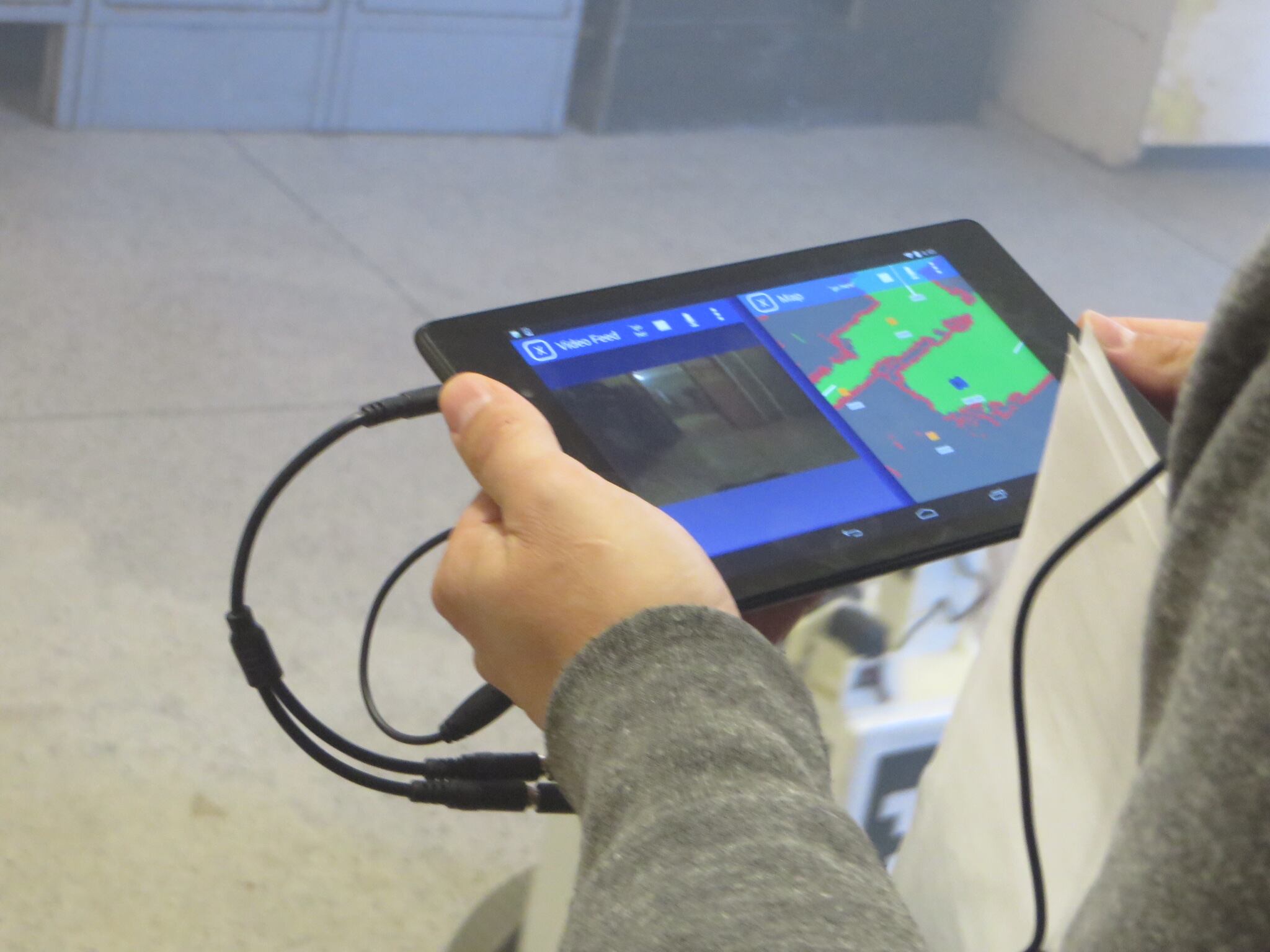Marines could someday control tactical robots using a glove that measures electronic signals or a watch that picks up gestures, thanks to technologies on display at a recent robotics controller challenge sponsored by the Marine Corps Warfighting Lab.
The lab is now in the final stages of selecting at least one or more of five cutting-edge technologies to study more closely. That will include and tests with Marines, which will kick off a three-year study of intuitive controlled robots and their use in combat. At this point, said Capt. James Pineiro, ground combat element branch head for the lab, there are lots of possibilities and few definitive answers, said Capt. James Pineiro, ground combat element branch head for the lab.
"When you do these things you don't always know where it leads," Pineiro said. "We do know that autonomy and robotics can help us. We're trying to figure out how."
At the lab's Intuitive Robotic Operator Control Challenge, held Oct. 20-24 at the Muscatauck Urban Training Center in Butlerville, Indiana, the technologies did not only have to impress Marine officials: they had to demonstrate they could work without disruption amid the chaotic sights and sounds of war.
During certain trials, the center generated atmospherics including battle sounds and smoke to test the systems' ability to understand and respond to commands despite the distractions.
The five technologies in the running include:d,
- The NASA Jet Propulsion Laboratory, a voice recognition control system that used an open-source voice recognition library from Carnegie Mellon University.
- also from JPL, aA "biosleeve," also from JPL, that used dry contact sensors to read electrical impulses in the user's left arm.
- from Anthrotronix Inc., aA wearable glove system from Anthrotronix Inc., with fine motor sensors.
- A speech-and-sketch tablet interface that allowed a robotic system to confirm commands and clarify with the user before following them.
- and from SoarTech, aA wrist-worn smartphone that reads gestures from SoarTech.

A user demonstrates a robotic control during recent testing. Marines could be called on to test robotic controls in the field.
Photo Credit: Courtesy of Marine Corps Warfighting Lab
The objective was to come up with a system that would keep an operator from having to stay "head down" in the controls, Pineiro said and to communicate with a robotic system "in a way comparable to the way mMarines talk in a dismounted squad by visible or signals."
"We wanted to quantify the promising technologies that are out there right now," he said.
Using a generic unmanned ground vehicle the vendors brought with them or one of the lab's Dragon Runner small unmanned ground vehicle systems, the controllers navigated three challenges. The first tested command recognition amid the fog of war; the second demonstrated the ability of the systems to execute a mission similar to one that might emerge in battle with as little human interaction as possible; and the third had the robotic systems accompany an operator through environments similar to combat zones to troubleshoot challenges that might interfere with the command interface.
The teams performed each challenge on their own, as Warfighting Lab officials took notes, but provides no feedback.
Pineiro said lab plans to select a winning technology -- or combination of technologies -- by New Year's. The three-year study that follows will likely include experiments in which Marines work with the systems and test their ability to perform a range of combat-related jobs.
While the parameters of military robotics technology are still being explored, Pineiro said troops have plenty of reasons to welcome the new research.
"[Robotics] can take some of the dull and dirty tasks away from Marines," he said.



